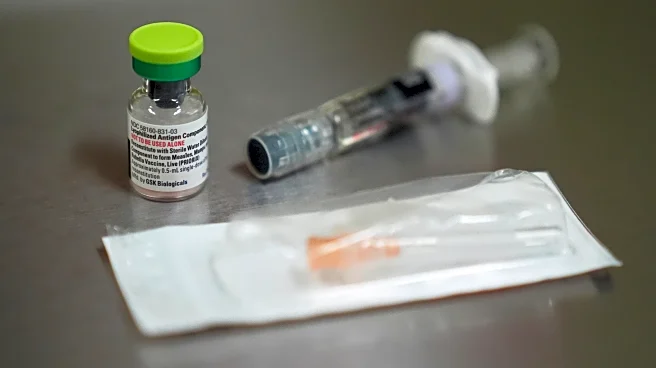What's Happening?
Health professionals are raising alarms over a surge in cases of hand, foot, and mouth disease, a highly contagious viral illness. The disease, which spreads through respiratory droplets and contact with infected surfaces, is particularly prevalent among
children. Symptoms include blisters on the hands, feet, and mouth, and while most recover with symptomatic care, severe cases can lead to complications such as dehydration or heart issues. Experts emphasize the importance of isolation and hygiene practices to prevent further spread.
Why It's Important?
The outbreak of hand, foot, and mouth disease poses significant public health challenges, especially in settings like schools and daycare centers where children are in close contact. The lack of specific antiviral treatments means that prevention through hygiene and isolation is crucial. This situation highlights the need for increased awareness and preparedness to manage viral outbreaks, which can strain healthcare systems and disrupt daily life.
What's Next?
Health officials are likely to increase public health messaging around hygiene practices and the importance of isolating infected individuals. Schools and childcare facilities may implement stricter cleaning protocols and monitor for symptoms to prevent outbreaks. Continued surveillance and research into potential treatments or vaccines could be prioritized to mitigate future risks.
Beyond the Headlines
The outbreak underscores the broader issue of viral transmission in communal settings and the importance of public health infrastructure in managing infectious diseases. It also raises questions about the readiness of healthcare systems to handle sudden increases in cases and the role of community engagement in disease prevention.














